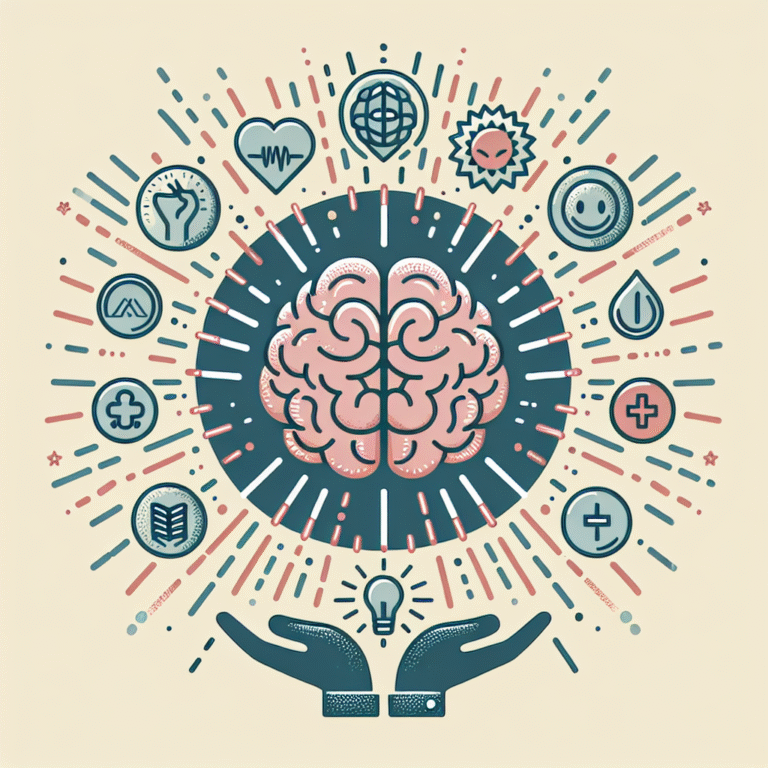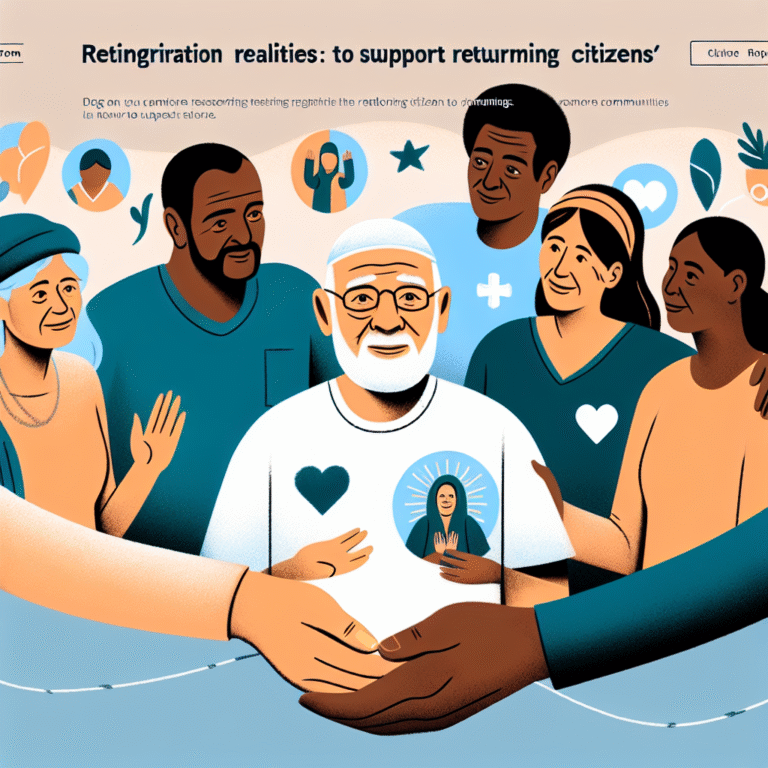
Introduction
Chronic pain affects millions of individuals globally, disrupting lives and limiting participation in everyday activities. Despite advancements in traditional pain management techniques, many find themselves trapped in a cycle of pain that feels insurmountable. Yet, the dawn of innovative approaches to chronic pain management has begun to pave new paths toward healing and relief. Breaking the Cycle: Innovative Approaches to Chronic Pain Management not only represents a clarion call for individuals suffering from persistent pain but also offers a beacon of hope through creative solutions that challenge conventional wisdom. This article dives deep into these transformative methods, unveiling strategies that empower individuals to reclaim their lives from the grip of pain.
Understanding Chronic Pain
Chronic pain is defined as pain that persists for longer than three months and can arise from various conditions, including arthritis, fibromyalgia, and nerve damage. Unlike acute pain, which serves a protective role signaling injury or illness, chronic pain often lacks an identifiable cause and can stem from complex interactions between the nervous system, psychological factors, and the environment.
The Economic and Emotional Toll of Chronic Pain
Chronic pain is not only a personal burden; it imposes a considerable economic toll, costing the global economy billions annually. Studies show that individuals with chronic pain experience higher rates of disability, unemployment, and decreased quality of life. Factors influencing the emotional impact of chronic pain include feelings of isolation, frustration, and depression, making effective management even more crucial.
Breaking the Cycle: Innovative Approaches to Chronic Pain Management
1. Mind-Body Interventions
Mind-body practices such as yoga, meditation, and mindfulness have gained traction as innovative approaches to chronic pain management. These techniques focus on the connection between mental and physical well-being.
Case Study: The Healing Power of Mindfulness
A 2016 study published in the Journal of Pain Research examined the effects of mindfulness meditation on fibromyalgia patients. Participants who engaged in an eight-week mindfulness course reported significant reductions in pain and improved emotional well-being.
Analysis: The study showcases that integrating mind-body interventions can break the cycle of pain by empowering individuals with coping strategies that enhance their perception of pain.
2. Physical Therapy: Personalized Movement Strategies
Physical therapy has long been a cornerstone of pain management. However, innovative approaches now emphasize personalized movement strategies tailored to the individual’s pain profile.
Case Study: Rehabilitation After Surgery
A case study involving a patient recovering from knee surgery highlighted how customized physical therapy regimens incorporating flexibility, strength training, and coordination helped alleviate pain and improve mobility faster than standard treatment alone.
Analysis: This example underscores that breaking the cycle often requires a tailored approach that addresses the unique circumstances of each patient’s condition.
3. Technology-Enhanced Pain Management
Digital health technologies are rapidly evolving, offering new tools to manage chronic pain. Virtual reality (VR) therapy and wearable devices are innovative solutions gaining traction.
Case Study: VR Therapy for Pain Management
In a pilot study published in Pain Medicine, participants using VR during painful medical procedures reported significantly lower pain levels and anxiety compared to a control group.
Analysis: This demonstrates how leveraging technology can not only distract from pain but also alter the pain experience itself, effectively breaking the cycle for many patients.
4. Nutritional and Lifestyle Interventions
Emerging research indicates that diet and lifestyle changes can have substantial effects on chronic pain management. Anti-inflammatory diets rich in vegetables, fruits, and omega-3 fatty acids have shown promise.
Case Study: The Mediterranean Diet and Arthritis
A cohort study published in the American Journal of Clinical Nutrition found that individuals adhering to a Mediterranean diet experienced reduced rheumatoid arthritis symptoms.
Analysis: This finding supports the idea that breaking the cycle of chronic pain may involve a comprehensive lifestyle overhaul, including dietary modifications to reduce inflammation.
5. Interdisciplinary Approaches
An interdisciplinary approach combining the expertise of medical professionals across various fields—including physicians, psychologists, physical therapists, and dietitians—holds considerable potential.
Case Study: The Pain Clinic Model
At a renowned pain clinic, a collaborative approach led to the implementation of integrated care plans addressing physical, mental, and social aspects of chronic pain. Patients reported improved outcomes, greater satisfaction, and fewer hospital visits.
Analysis: This case illustrates that breaking the cycle of chronic pain often requires input from multiple specialties, fostering a holistic approach to management.
Visual Insights: The Pain Management Landscape
| Innovative Approach | Benefits | Key Researchers/Studies |
|——————————-|——————————————|——————————–――——-|
| Mind-Body Interventions | Reduces perception of pain | Journal of Pain Research, 2016 |
| Personalized Physical Therapy | Improves mobility and independence | Patient Recovery Case Study, 2020 |
| Technology-Enhanced Solutions | Alters pain experience | Pain Medicine Pilot Study, 2021 |
| Nutritional Interventions | Reduces inflammation | American Journal of Clinical Nutrition |
| Interdisciplinary Approaches | Provides comprehensive care | Pain Clinic Collaborative Study, 2022 |
6. Alternative Therapies: Beyond Conventional Medicine
Acupuncture, chiropractic care, and therapeutic massage offer alternative avenues for chronic pain relief. These therapies often complement traditional healthcare practices.
Case Study: Acupuncture and Chronic Back Pain
In a systematic review published in Pain, researchers found that acupuncture significantly relieved chronic back pain compared to standard care alone.
Analysis: This case confirms that alternative therapies can effectively break the cycle by providing relief when conventional methods falter.
7. Behavioral Modifications and Cognitive Behavioral Therapy (CBT)
Cognitive Behavioral Therapy (CBT) focuses on changing the thought patterns and behaviors associated with pain. This approach empowers individuals by teaching coping strategies and promoting a sense of control.
Case Study: CBT for Chronic Pain
Research published in Psychological Assessment demonstrated that patients receiving CBT alongside medical treatment reported lower pain levels and improved emotional resilience compared to those receiving standard care.
Analysis: The effectiveness of CBT highlights the psychological components of chronic pain and suggests that breaking the cycle often includes addressing mental health alongside physical symptoms.
Conclusion
Chronic pain is a formidable adversary, impacting the lives of many. Yet, the dynamic landscape of pain management reveals a plethora of innovative approaches tailored to break the cycle of suffering. Each technique—ranging from mind-body interventions to technology-enhanced solutions—invites individuals to take an active role in their healing journey. By blending these innovative practices, patients can navigate their pain in a more empowered way, unveiling a world of possibilities.
As we journey together towards breaking the cycle: innovative approaches to chronic pain management, let us remain hopeful and open to exploring unconventional methods. The key is to foster resilience, embrace new ideas, and seek tailored strategies to reclaim one’s life from chronic pain’s relentless grip.
FAQs About Chronic Pain Management
1. What is chronic pain?
Chronic pain is a pain that lasts longer than three months. It can be caused by various factors and often continues even after the underlying injury has healed.
2. How do mind-body interventions help manage chronic pain?
Mind-body interventions like yoga and meditation can help reduce pain perception and improve emotional health, offering coping mechanisms for individuals with chronic pain.
3. Can dietary changes impact chronic pain?
Yes, adopting an anti-inflammatory diet can help reduce pain and inflammation associated with chronic conditions, positively influencing overall health.
4. Is technology useful in pain management?
Absolutely! Techniques such as virtual reality therapy and wearable devices have shown promising results in managing and even decreasing pain perception.
5. Why is an interdisciplinary approach effective for chronic pain management?
An interdisciplinary approach ensures that all aspects of a patient’s condition—physical, mental, and social—are addressed, leading to more comprehensive and effective treatment plans.
By embracing these innovative approaches to chronic pain management, individuals can break free from the constraints of pain, reclaim their lives, and embark on a journey towards healing and vitality.


















